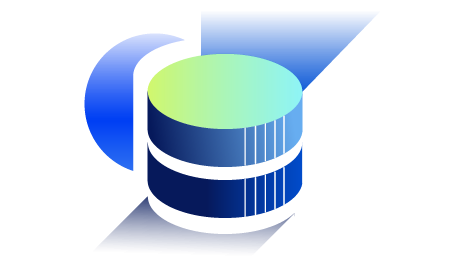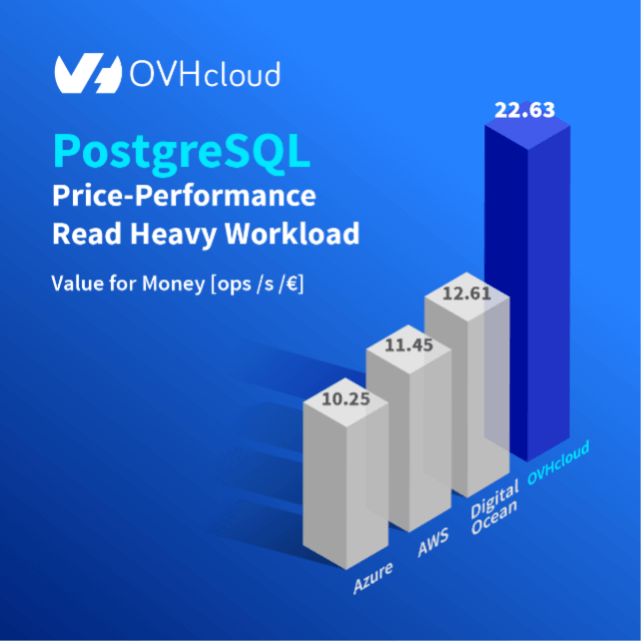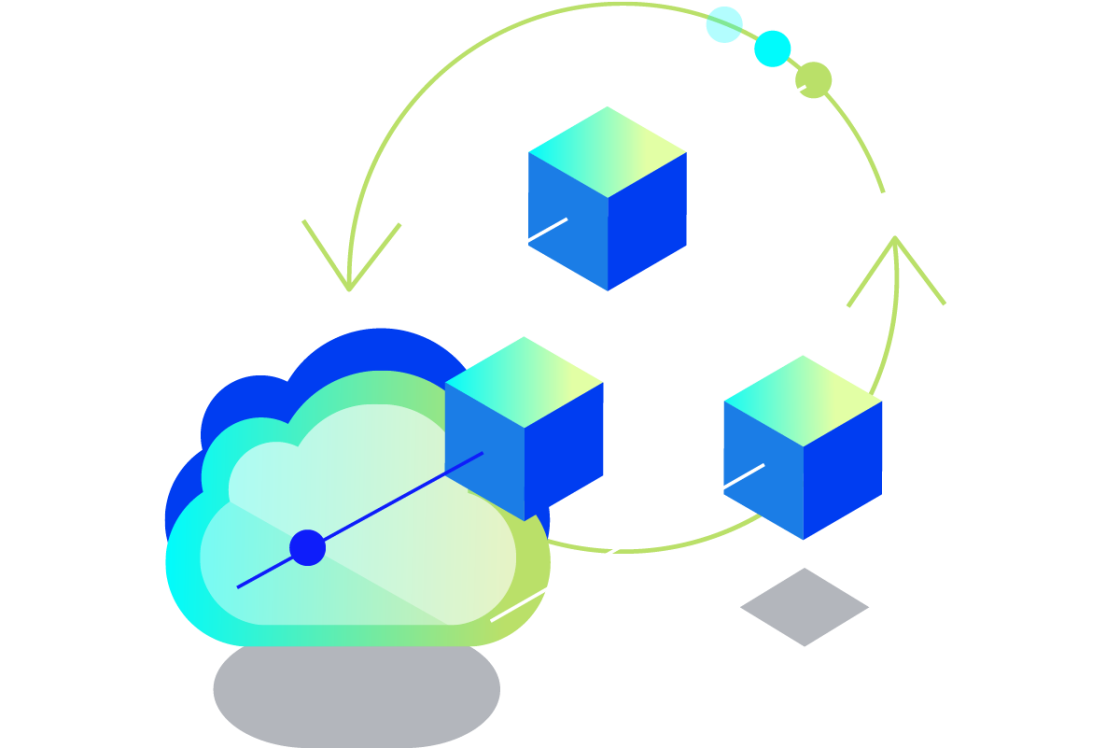Cloud Databases
Cloud Databases
Choose from a broad range of database engines. Your data infrastructure is expertly taken care of—initial setup, backups, scalability, and robust security measures—so your team can focus on building applications.

Gain a competitive edge using our managed databases

Resilient and production-ready
Opt for a service that offers top-tier availability and security, with storage, compute, and secure network resources, deployed either in a 1-AZ or 3-AZ region. Experience the benefits of both resilience and sustainability.

Built on open-source technologies
Data is one of your business’s key assets. Using popular open-source standards frees you from vendor lock-in, and lets you leverage the best technologies in application building.

Zero infrastructure concerns
Leave database administration (setup, maintenance, scalability, and security) to us and focus on what matters most for your business.

Integrated with our Public Cloud ecosystem
Choose and deploy a database service within your Public Cloud project, interconnected with over 60 other cloud services, and manage it using familiar tools like OVHcloud API or CLI.

Transparent and flexible pricing
Take complete control of your costs by only paying for what you use. Our pricing is simple and predictable. Database usage is billed hourly or monthly.

Real-time insights for database performance
Elevate database performance and resilience with Prometheus-based monitoring. Get real-time insights, automatic alerts, and advanced monitoring.
In short: why choose OVHcloud cloud databases?
Because you want to focus on scaling your application, not fuss over managing infrastructure. OVHcloud's portfolio of fully-managed Databases should cover your data requirements, whilst also relieving you from resilience headaches, technical lock-in, costs burden and compliance worries. Pick the right engine for your project and deploy in seconds.
YouTube conditions the playback of its videos on the deposit of tracers in order to offer you targeted advertising based on your browsing.
In order to watch the video, you need to accept the Sharing cookies on third-party platforms privacy category in our Privacy Center. You have the option of withdrawing your consent at any time.
For more information,visit the YouTube cookies policy and the OVHcloud cookies policy .
Our range of Cloud Databases for
Cloud-based PostgreSQL Performance Benchmark
Cloud-based managed databases are a key resource for modernising applications. In this benchmark, BenchANT, a cloud infrastructure expert, compared the prices and performance of OVHcloud’s instances to those of market leaders like AWS, Azure, and Digital Ocean, specifically focusing on the popular PostgreSQL engine.

Why OVHcloud?
Open and reversible
We provide database solutions compatible with popular open-source engines like PostgreSQL, MySQL, Valkey, Cassandra, as well as industry-standard databases such as MongoDB. We are also active members of several communities, including the Cloud Native Computing Foundation (CNCF), Open Infrastructure Foundation, and Open Invention Network (OIN). All Public Cloud services are accessible via standard cloud computing APIs.
Pay as you go
Get commitment-free cloud resources, and see exactly what you’re paying for with our clear, upfront billing. Say goodbye to pre-provisioned servers and storage, and to dormant infrastructure—simply create and remove resources as needed. We only charge you for what you use.
Simple and predicable billing
Your resources and services are grouped into projects. This means you can segment your uses based on your business needs. A bill is generated for every project at the end of the month, offering clarity and ease of tracking. You can also generate a usage forecast and set up alerts.
Innovation for Freedom
No more stressing about being locked into specific technologies or contracts. Easily and confidently predict your bills. Your data is secure, and your infrastructure can scale globally with just a few clicks.
Certified and compliant
Our cloud infrastructures and services are certified ISO/IEC 27001, 27017, 27018, 27701, and SOC 2 Type 2 compliant. These certifications confirm a fully implemented ISMS for mitigating risks and vulnerabilities, alongside a PIMS for handling privacy data.
Sustainability
We achieve market-leading energy efficiency through industrial innovations such as water cooling for our servers. We also recycle and reuse our electronic components.

Explore the potential of the Public Cloud
Discover our comprehensive portfolio of Public Cloud solutions — Compute, Storage, Network, AI and much more — through an interactive and certification-focused learning experience.
Integrated Identity, Data Security and Observability Products
Your questions answered
What is a cloud database?
A cloud database is often referred to as “database as a service” or a “cloud database service”. It is built and accessed through a cloud platform. A cloud database enables enterprises to host databases without buying dedicated hardware. Cloud databases support both relational (MySQL, PostgreSQL) and NoSQL (MongoDB, Caching, Apache Cassandra) databases.
While users can directly manage their databases, many cloud providers integrate the database engine into virtual machines or servers, delivering it as a managed service. This service from cloud providers gives developers the freedom to build without the burden of managing the software or underlying infrastructure. Cloud providers handle service installations, updates, and maintenance, providing extra benefits such as scalability, high availability, backup, and security. This significantly reduces the burden of complex and time-consuming database administration tasks, previously handled by a database administrator (or DBA). Users can access the database via web interface or vendor-provided API.
How to get personalised support for your project
OVHcloud Professional Services can assist you in setting up your DBaaS, or resolving technical issues. Our Data Infrastructure experts offer support packages: one-day options (Basic, Advanced, Custom) and longer-term packages. Dive deep into the OVHcloud product ecosystem; get expert advice on architecture, implementation, performance tuning, and more—plus personalised support to optimise your service usage.
Why is database as a service useful?
Managing and operating databases often demand time and expertise. This is partly because of the number of database engines available on the market: relational, non-relational, time-series, caching, indexing, key-value, etc. As a result, developers usually take on the responsibility of managing a range of database-related tasks. The lack of database administrator support makes it challenging to fully focus on coding. By removing this burden, Database as a Service lets engineering and development teams prioritise core tasks—delivering software for business applications.
Why run a database in the cloud?
Cloud computing’s financial benefits, such as shifting infrastructure costs from CAPEX to OPEX, are a major factor in its expanding use, particularly for databases. Organisations migrating to the cloud sidestep infrastructure capacity planning and lengthy contracts. Businesses save money by outsourcing their IT tasks to cloud experts. Because applications rely on databases, organisations prioritise cost savings and improved database management. Cloud-based databases help businesses cut IT infrastructure costs and focus on building innovative applications quickly.
What is the difference between 1-AZ and 3-AZ regions?
Learn more about the resilience of deployment modes in our dedicated guide.
A 1-AZ region uses a single availability zone, connected to one or more datacentres. Although it offers protection against server and driver failures, it could be vulnerable to outages, which potentially impacts access if the hosting datacentre fails.
In comparison, a 3-AZ region consists of 3 independent availability zones, each isolated in terms of power, cooling, and network systems, providing complete fault isolation. This setup ensures service uptime even if an entire availability zone goes down.
You can enjoy peace of mind with 99.99% availability SLAs.
Why are open-source databases popular?
An application’s data model is defined by its databases. Open-source engines offer greater flexibility compared to proprietary database management systems, as developers can avoid being tied to a single vendor’s technology which might become outdated over time. Open-source databases can help avoid hefty costs and minimise risks by eliminating licensing fees and vendor lock-in.
Which cloud database is best?
Like all cloud products, a cloud-based database isn’t just one offering. There are several cloud databases with different cloud capabilities. The cloud database that works for you will depend entirely on your specific needs. MongoDB is a great option if you need a database that is versatile, scalable, fast, reliable, and easy to manage. However, if staying within budget is a priority and you need a cloud-based database, MySQL could be a more suitable option. We’ll soon expand our database offerings to include MySQL and PostgreSQL (relational) and Valkey (in-memory).




